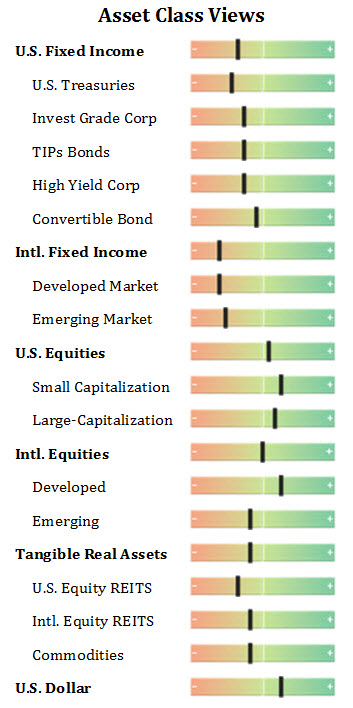“Do not stop, do not linger in your journey, but strive for the mark set before you.” -George Whitefield.
The top was down, the sunscreen on and we felt like we were born to ride. No traffic noise competed with the soft beat of Hawaiian music on our car radio, only the distant sound of waves crashing on the rocks below us. A light breeze of air softly immersed us with the harmonious blend of fragrances from Maui’s pink lokelani flower and the scent of the ocean below. The scenery was absolutely breathtaking as we made an unforgettable 50-mile journey from Lahaina to Hana.
That wonderful experience took place some 25 years ago, but it seems just like yesterday. I can still remember the car rental lady promising us that the ‘Road to Hana’ would be a very memorable experience. At the time, I’m sure she had no idea how right she would truly be.
Undoubtedly, not all memorable experiences are easy ones. Even the road to Hana, with all of its wonderful smells and gorgeous views of cliffs, beaches and rainforests, was littered with mile after mile of sharp curves and one lane bridges. You had to keep your wits about you as you drove that little stretch of heaven to keep from careening off the road into the ocean below—or simply to keep from becoming carsick.
Over the last two months stock and commodity markets across the globe have carved out their own little memorable experiences for us. It’s been a lot like the ‘Road to Hana,’ but without the sweet smells and beautiful scenery. Not only have we been taken on a roller coaster ride, fraught with twists and turns, but we have also been made to feel sick at times! So what’s up with all of this volatility? Why are we feeling a little queasy after this two month trip? And what should we expect going forward?
Humor me for just a minute. Fill up your gas tank (get a cup of coffee) and get comfortable in your easy chair. Put the top down and imagine the gentle, fragrant breeze of Maui caressing your face as your destination lies before you. Grip the steering wheel securely in one hand and hold on to your hat with the other. Let’s take a metaphorical ride through the world economy and financial markets to see what answers we can find.
What is up with all of this market volatility…and why are we feeling a little queasy?
That is the $64-million-dollar question. Of course, there is no way to read the collective minds of investors. Even if we could, investors don’t always know themselves why they really behave the way they do. But the following four observations on the current situation are the most salient ones I have gleaned from my reading and discussions:
- Extreme volatility in Chinese equities in recent months, along with an unexpected devaluation of their currency, the RMB, has the world concerned about a slowdown in China’s growth. Recent disappointing economic data-points have only increased those concerns. Emerging markets are generally the hardest hit by global growth concerns. The U.S. stock market is most specifically worried about the potential knock-on effects of such a slowdown to countries with strong economic ties to the U.S.
- Weak commodity prices are severely pressuring profits at energy and materials companies, pushing up credit spreads and causing anxiety that increased defaults may soon follow. Additionally, many market participants are concerned that weak commodity prices are signaling that an even more substantial Chinese economic slowdown is underway.
- The stronger U.S. dollar is having a negative impact on the earnings and revenues of many multinational companies in the third quarter, and will likely continue to do so for the next few quarters.
- The Federal Reserve’s Open Market Committee meeting on September 16-17 did not raise interest rates, citing negative global developments. This comment, along with the rate-change delay itself, only accentuated concerns about the potential for a global slowdown.
These are all valid points of concern for investors to absorb and to incorporate into their financial worldview. Each adds a little more uncertainty to the future path of corporate earnings and global growth – and more uncertainty tends to increase market volatility.
Yet sometimes we can become so focused on the trees that we fail to see the forest. I think that is the case with many people at present. News stories of China’s slowing growth and related weak commodity prices fill the news-cycle. Active traders react by buying or selling, depending on the specific nature of a news item or data point. Those traders may be missing a fact that we would do well to remember. Daily news items or economic data points are generally the result of much larger global economic drivers, rather than the cause. Here are two very important “macro-drivers” at play right now:
- Extended quantitative easing programs in both Europe and Japan have caused a substantial misalignment of currency exchange rates. This is destabilizing the terms-of-trade between affected partners. For example, Japan’s currency has devalued by over 48% in the last three years versus the U.S. dollar, all while Japan’s largest trading partner, China, has kept its own currency pegged to the dollar. This has caused China’s exports to become 48% more expensive to the Japanese consumer while Japan’s exports have become 48% cheaper to the Chinese. It’s no wonder China’s exports and, therefore, economy are softening. These types of currency exchange disparities are destabilizing to countries that do not have a free floating exchange rate and who resist devaluation. Yet, even when China moved to devalue its currency (by less than 3%) on August 11, 2015, the markets reacted negatively, and have now become increasingly sensitive to almost any downbeat news out of China.
- The investment boom of the past decade, undertaken to build out China’s infrastructure, led to rapid economic growth rates and ultimately to a significant overbuilding of capacity. Now, with the largest part of the build-out over, China finds itself with excess manufacturing capacity and falling commodity prices. For years now, economists have stressed the importance of China rotating its economy away from investment-led, and towards consumer-led, growth. This is a normal transition for emerging markets as they begin to evolve into more mature economies, and as their middle class grows wealthier. The expectation is for China’s emerging consumer to increasingly drive domestic demand, ultimately replacing foreign demand as the primary driver of growth. China is actively seeking to achieve this goal and is beginning to have some success. A significant impediment is the currently strong Chinese currency, coupled with a severe commodity glut that is slowing manufacturing exports faster than the Chinese consumer can offset.
Significant declines in commodity prices have placed a pall over much of the global economy, even credit markets. Fortunately, significantly lower prices are the quickest way to reduce supplies, which will then help stabilize prices. Much, if not all, of the needed decline may have already occurred in some segments of the commodity complex.
Glencore, a large multinational commodity trading and mining company, has recently announced significant reductions of its mining operations in zinc, copper and coal. Moves such as this will eventually balance supply and demand, and ultimately bring a normalization of metals prices. The same will hold true across other commodities, including oil, as prices begin to adjust to moderating supplies. Until that process has finished, we should expect periodic bouts of volatility as the markets sort out the current imbalances in commodities, currencies and the overall global economy.
Despite all of this, we have witnessed a number of encouraging signs in the last couple of weeks. It looks increasingly likely that the brunt of the commodity rout may be over. Recent gains in commodities and especially energy have been the strongest in over four years. This has also led to a bounce in other risk assets. Even emerging stocks and credit markets may be finding their legs. Fading worries over why the Federal Reserve delayed rate hikes has also helped sentiment lately.
Going forward, we expect China will continue to work toward the goal of a more consumer-driven economy. We expect to see some positive impacts of recent policy moves in the fourth quarter, part of which will be coming from additional fiscal stimulus and efforts to accelerate already pending projects. If commodity prices can begin to stabilize somewhat, this could serve to boost sentiment toward Chinese stocks.
In the US, economic expansion continues. We expect the cessation of significant further declines in oil prices could boost S&P 500 earnings prospects that have been weighed down by energy company losses for the last year. This could allow corporate earnings to resume a favorable trajectory in the year ahead. If oil prices could manage to stage a further rebound on rising global demand, that might serve to boost earnings even further.
Globally, commodity consumers are benefiting significantly from low commodity prices. Outside of the U.S., both Europe and Japan have been in the midst of an earnings rebound. Should the global economy continue to improve, as we expect it will, these trends will likely continue. We continue to favor Europe and Japan in developed markets because of their favorable valuations, improving earnings and highly accommodative central banks.
I believe the main risk to our outlook is the possibility of China’s transition to a consumer-driven economy hitting larger bumps in the road than we presently expect.
That brings us to the end, until next month, of our metaphorical trip through the financial world. Unlike the ‘Road to Hana,’ which was more about the journey than the destination, our journey as investors is all about the destination—achieving our financial goals despite the inevitable ups and downs in our path. We will always do our best to guide you through the bumps and bring you safely home. Thanks for choosing to make the journey with us!
Disclosures: The views expressed are those of Byron Green as of October 15, 2015 and are subject to change. The information contained herein does not constitute investment advice or take into account any investor’s particular investment objectives, strategies, tax status or investment horizon. Additionally, this publication is not intended as an endorsement of any specific investment. Investing involves risk and you may incur a profit or a loss. Information contained herein is derived from proprietary and non-proprietary sources. We encourage you to consult with your tax or financial advisor. Click here to read the GIM Form ADV Part 2 for a complete list of Green Investment Management’s services.
![]() Click here to download printable PDF of GIM Market Commentary 10-15-2015
Click here to download printable PDF of GIM Market Commentary 10-15-2015


